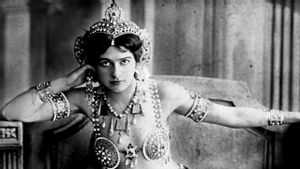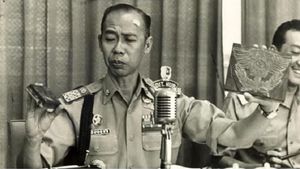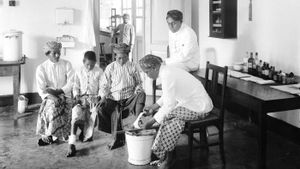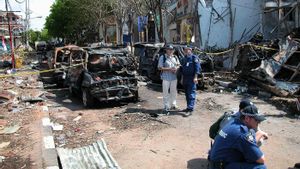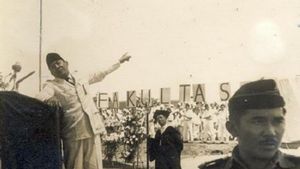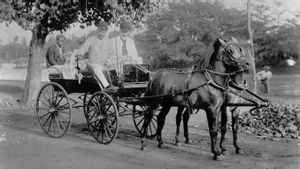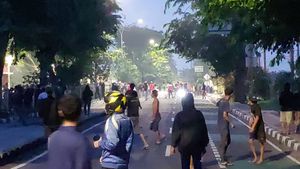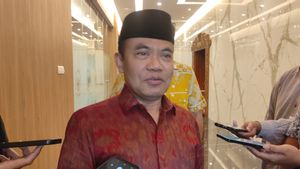JAKARTA – Today's history, 329 years ago, on October 19, 1693, the Dutch trading company VOC inaugurated the construction of a Protestant house of worship, the Portuguese Buitenkerk (Portuguese church outside the city walls). Pieter van Hoorn of the Council of the Indies laid the foundation stone for symbolic development.
The church came to be known as the Zion Church. The presence of the Portuguese Church was intended for groups of Portuguese slaves from Malacca (the Mardijkers) who had converted. From Catholic to Protestant. As a form of sympathy, the Dutch also gave them special privileges. one of them is Church construction.
The Dutch trading company VOC often echoed the moral behavior of life. In fact, since the initial phase of his power in Batavia. Relationship with God remains number one. Trade number two. The Dutch were also expected to become devout Calvinists (Protestants).
The VOC tried to straighten out all kinds of behavior of the Dutch – from officials to soldiers. Meanwhile, those who do not want to hear and perpetuate violations of church norms will be immediately eradicated. Especially those who are addicted to drunkenness and adultery. Severe punishment awaits. Life can be taken because of it.

VOC officials, from the time of Jan Pieterszoon Coen, continued to maintain the morale of the Dutch in the colonies. The governor-general of the VOC twice --1619-1623 and 1627- wanted to make the Dutch as role models in the colony.
This obedience made the VOC continue to perpetuate the religious agenda. They invited all Dutch people to actively teach their slaves. That's what was then done when the Dutch captured Malacca from the Portuguese in 1641.
Slaves from Malacca were brought down to Batavia like prisoners of war. Instead of being hated, the Dutch acted like saviors. The slaves known as the Black Portuguese were offered special privileges, as long as they wanted to convert: from Catholicism to Protestantism.
“Both the Company and the first generation of colonizers were of the opinion that their main task was to teach their slaves as soon as possible, following the example of Prophet Abraham, who, according to the Bible, also considered and treated his slaves as members of his own family. In cities such as Batavia, Malacca, Colombo, and the Cape of Good Hope, baptism gave slaves the right to marry, be buried Christianly, and receive an inheritance: a social and legal position in a Christian society.”
“Therefore, baptism does not only need to be done to save one's soul, but only needs to be done to develop an orderly Christian society. Making people embrace a narrative religion identical with assimilation; This goal is to be achieved by the church and also by the government,” said Historian Hendrik E. Niemeijer in the book Batavia: Masyarakat Kolonial Abad XVII (2012).

The conversion of religion made slaves freed. They were also known as the Mardijker (freed slaves). They were allowed to live in the City of Batavia and the Omelanden area. They have the same rights as Europeans. They could build houses and work in Batavia.
All kinds of needs of the Mardijkers were provided by the VOC. The construction of the Portuguese Buitenkerk, is one of them. The Portuguese church was deliberately established as evidence of the close relationship between the Dutch and Mardijker.
Moreover, the laying of the foundation stone for the Portuguese Church was carried out directly by the representative of the Raad van Indie (Council of the Indies), Pieter van Hoorn on October 19, 1693. The church which is now located on Jalan Pangeran Jayakarta was completed two years later, or in 1695.
“The hallmark of the Mardijker group is its language. They speak Portuguese (perhaps an Asian dialect and are Christian. Later after the VOC captured Malacca in 1641 many people who claimed to be of Portuguese descent came to Batavia. At first, they were given a place in the city."
“A few years later they were moved outside the city walls and given a church known as the Portuguese Buitenkerk, which means the Portuguese Church outside the city walls. The church is now known as the Zion Church,” explained Muhadjir in the book Bahasa Betawi: Sejarah dan Perkembangannya (2000).
VOIR éGALEMENT:
The English, Chinese, Japanese, Arabic, and French versions are automatically generated by the AI. So there may still be inaccuracies in translating, please always see Indonesian as our main language. (system supported by DigitalSiber.id)



